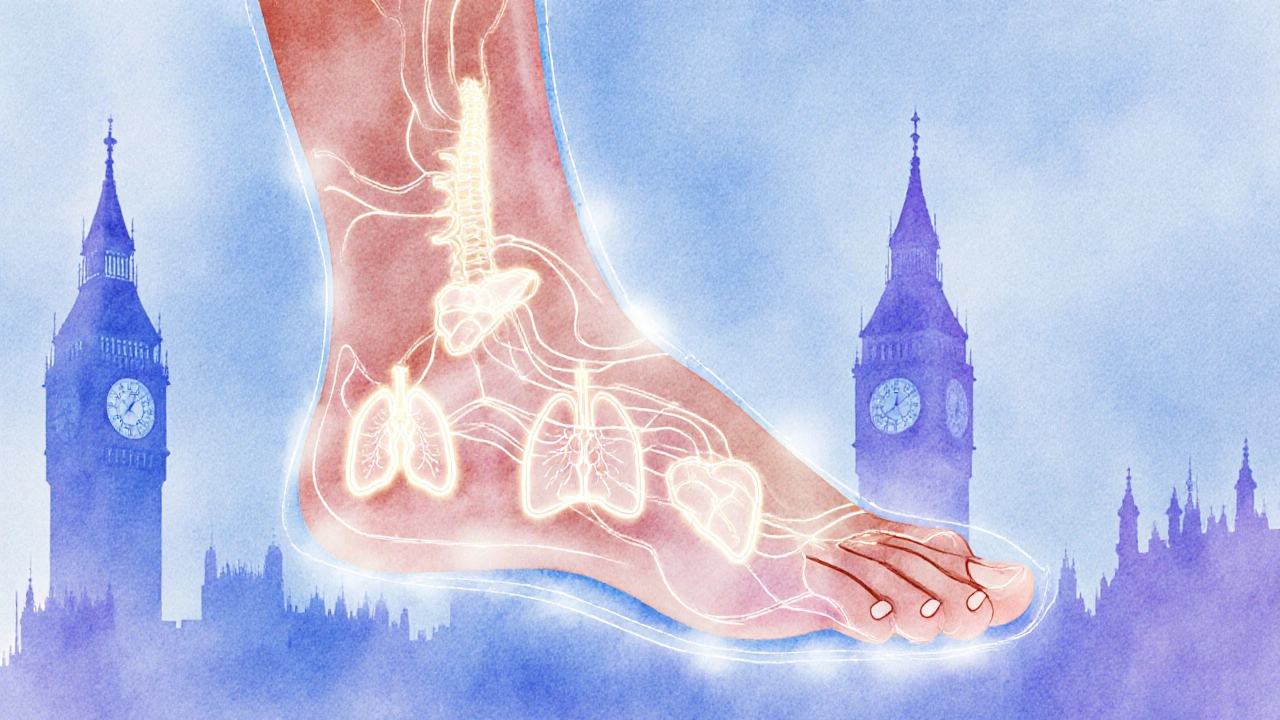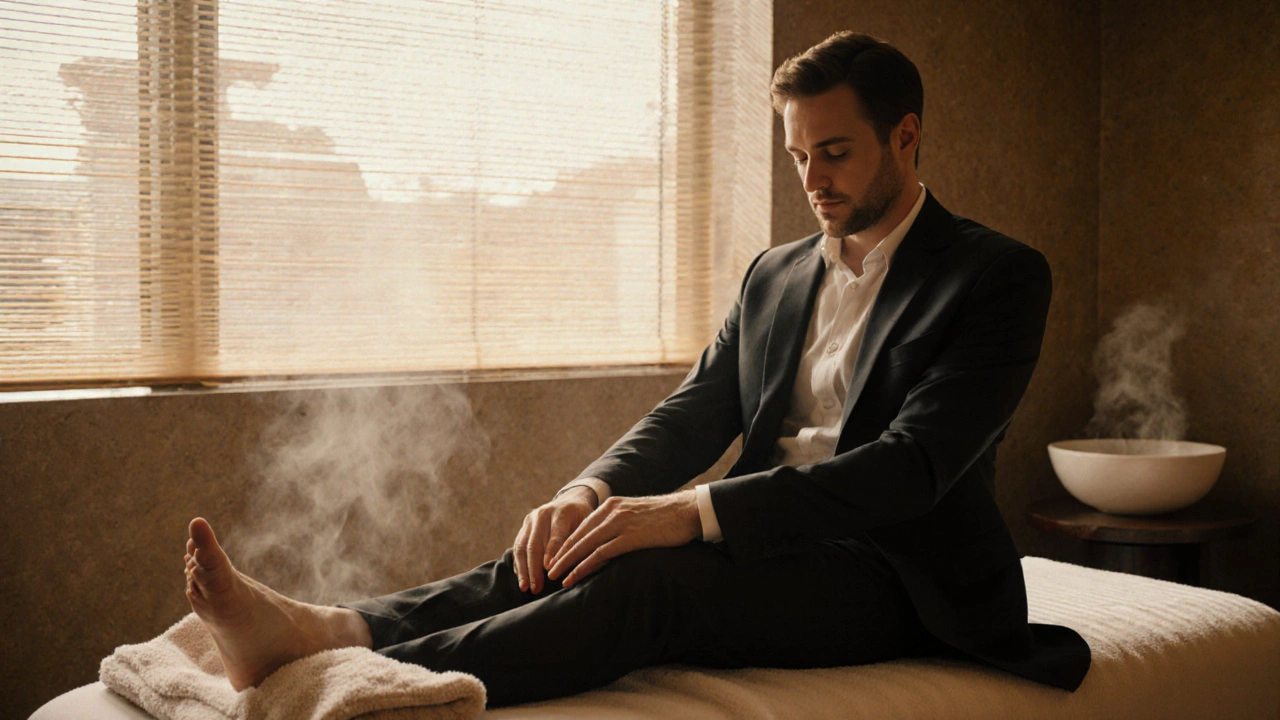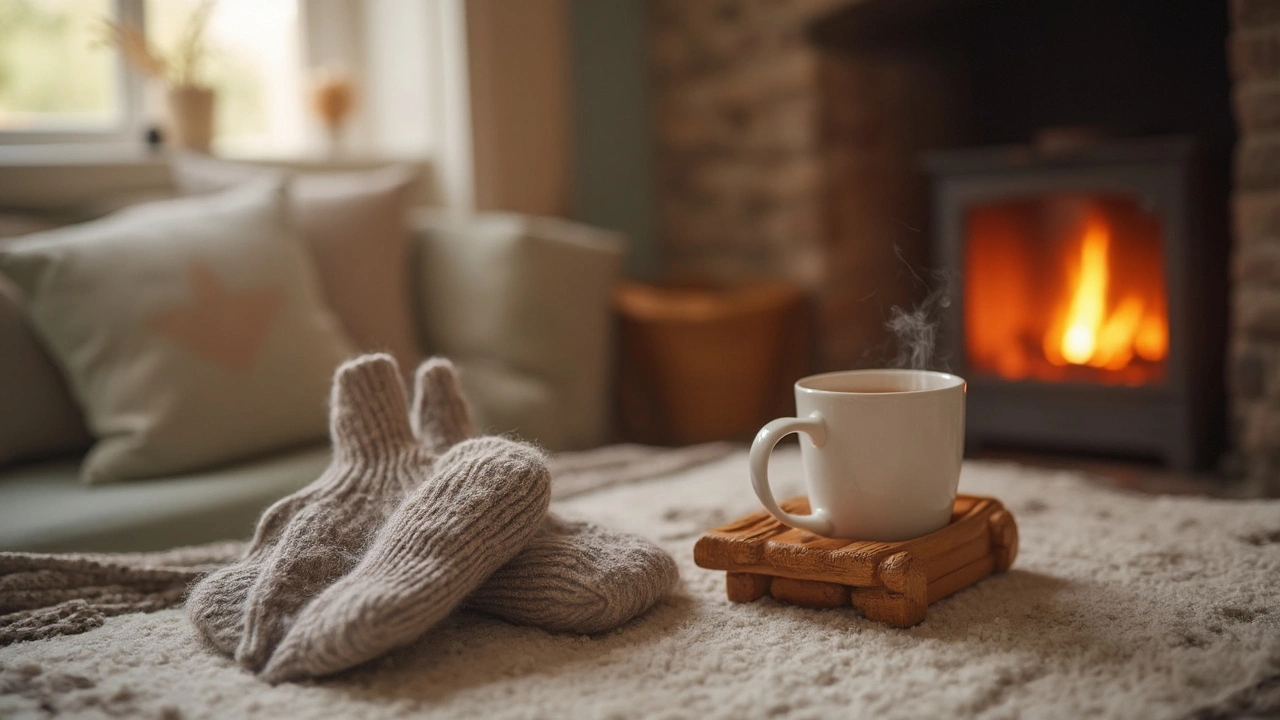You’ve been on your feet all day-standing in meetings, rushing between appointments, pacing through airports, or just sitting slumped at a desk for eight hours straight. Your feet? They’re screaming. Not out loud, but you feel it: the ache in your arches, the heaviness in your heels, the tightness that radiates up your calves. And you’re too tired to do anything about it. Sound familiar?
Here’s the truth: your feet aren’t just support systems. They’re your body’s first responders to stress. When you’re overloaded, your feet hold onto it. A foot massage isn’t a luxury-it’s a reset button for your nervous system. And for busy professionals, it’s one of the most underrated tools for staying sane.
Why Your Feet Are the First to Break Down
Think of your feet as the foundation of a house. If the foundation cracks, everything else starts to shift. For professionals, that foundation takes constant abuse. Whether you’re wearing dress shoes that pinch, standing on concrete all day, or constantly switching between sitting and standing, your feet absorb the physical toll.
Studies show that people who sit more than six hours a day report 40% higher levels of foot pain than those who move regularly. But it’s not just physical. Stress triggers muscle tension-and your feet have over 7,000 nerve endings. That’s more than your tongue. When you’re anxious, those nerves fire. Your feet tighten. You don’t even notice until you can’t walk without wincing.
That’s why a foot massage isn’t just about relaxation. It’s about reversing the damage before it becomes chronic pain, plantar fasciitis, or even sciatica.
What Happens During a Foot Massage?
It’s not just rubbing. A proper foot massage targets pressure points tied to every major organ and system in your body. Reflexology, a technique rooted in ancient Chinese and Egyptian practices, maps the feet to areas like the liver, heart, lungs, and spine. When pressure is applied to the ball of the foot, for example, it stimulates the lungs. The inner arch? That’s the spine.
During a 60-minute session, you’ll typically lie back on a comfortable table while the therapist uses thumbs, knuckles, and sometimes wooden tools to work through layers of tension. You might feel a little discomfort in spots-that’s the tightness releasing. But it should never hurt. The goal is to melt, not flinch.
Most people feel immediate relief: lighter legs, deeper breaths, and a quieting of the mental chatter. One London banker I spoke with said, “After my first session, I actually slept through the night. For the first time in months.”
The Real Benefits-Backed by Real People
Let’s cut through the fluff. Here’s what foot massage actually does for busy professionals:
- Reduces cortisol levels by up to 30% in a single session (University of Miami School of Medicine, 2024)
- Improves circulation, helping oxygen and nutrients reach tired muscles faster
- Decreases swelling in ankles and feet-especially helpful for those who fly often or stand all day
- Boosts sleep quality by activating the parasympathetic nervous system (your body’s “rest and digest” mode)
- Relieves headaches caused by tension in the neck and shoulders-yes, your feet are connected
One IT manager in Canary Wharf started getting weekly foot massages after developing chronic migraines. Within three weeks, her headaches dropped from five times a week to once. She didn’t change her diet, her screen time, or her meds. Just added 60 minutes on the table.
Types of Foot Massage Available in London
Not all foot massages are the same. Here’s what you’ll find in London right now:
- Reflexology Foot Massage - Focuses on pressure points linked to organs. Best for stress, digestion, and sleep issues.
- Swedish Foot Massage - Long, flowing strokes with light to medium pressure. Ideal for general relaxation and circulation.
- Deep Tissue Foot Therapy - Targets chronic tightness, scar tissue, or plantar fasciitis. Not for beginners.
- Hot Stone Foot Massage - Uses heated stones to melt deep tension. Great in winter or after long flights.
- Thai Foot Massage - Combines acupressure, stretching, and herbal compresses. Often includes a leg and calf stretch.
Most spas offer 30, 60, or 90-minute sessions. For professionals, 60 minutes is the sweet spot. Less than 30? You won’t feel the shift. More than 90? You might feel groggy.

Where to Find Quality Foot Massage Services in London
You don’t need to book a luxury spa to get real results. Here’s where to look:
- Soho - Home to some of the best reflexology specialists. Try Feet First Soho-their therapists have 10+ years of experience.
- City of London - Quick lunchtime sessions (30 mins) are available near Bank and Moorgate. Many offer express foot massages between 12-2pm.
- Camden - Affordable Thai foot massage spots with herbal oils. Great for budget-conscious professionals.
- West End - Upscale options with aromatherapy and heated tables. Ideal if you want to treat yourself after a big presentation.
- Home Services - Companies like Relax at Home London send certified therapists to your office or apartment. No commute, no waiting.
Check Google reviews for “foot massage London” and look for therapists with certifications from the British Reflexology Association or Complementary and Natural Healthcare Council. Avoid places that don’t list qualifications.
What to Expect During Your First Session
First-timers often worry they’ll feel awkward. You won’t. Here’s what actually happens:
- You’ll remove your shoes and socks. You’ll keep your clothes on-no nudity.
- You’ll lie back on a massage table or reclining chair. A warm towel covers your legs.
- The therapist will cleanse your feet with a gentle scrub or warm soak.
- They’ll start with light strokes to warm up the tissue, then work deeper into the arches, heels, and toes.
- You might feel a few spots that “ping” when pressed-that’s normal. Tell them if it’s too much.
- They’ll finish with a gentle stretch and a cool towel wrap.
Most sessions end with you feeling like you’ve had a nap-but awake. You’ll walk out lighter, calmer, and surprisingly energized.
Pricing and Booking: No Surprises
Prices in London vary by location and service type:
- 30-minute express - £25-£40 (great for lunch breaks)
- 60-minute standard - £50-£80 (most popular)
- 90-minute deluxe - £90-£130 (includes leg and calf work)
- Home/office visits - £70-£110 (includes travel fee)
Many places offer packages: buy 5 sessions, get the 6th free. Corporate wellness programs often cover foot massage as part of employee health plans. Ask your HR department.
Book online. Most reputable places let you pick your therapist, time, and even preferred oil (lavender, eucalyptus, or unscented). Don’t be shy about asking for a therapist who specializes in professional stress.

Safety Tips: Avoid the Pitfalls
Foot massage is safe for almost everyone-but not if you’re unaware of red flags:
- Don’t go if you have open wounds, infections, or blood clots in your feet or legs.
- Diabetics should check with their doctor first. Nerve damage can make you less sensitive to pressure.
- Pregnant women can benefit-but only with therapists trained in prenatal reflexology.
- Avoid places that use unlicensed staff. Look for certification badges or ask to see credentials.
- Don’t rush. Give yourself 15 minutes after the session to sit quietly. Your body is still resetting.
Foot Massage vs. Foot Soak: What’s Better?
Many people think a hot foot soak is enough. It’s not.
| Feature | Foot Massage | Foot Soak |
|---|---|---|
| Pressure Point Work | Yes-targets nerves linked to organs | No |
| Stress Hormone Reduction | Up to 30% | 5-10% |
| Long-Term Pain Relief | Yes-breaks muscle adhesions | Temporary only |
| Time Required | 30-90 mins | 15-20 mins |
| Best For | Chronic stress, desk workers, frequent flyers | Quick refresh after a long day |
A foot soak feels nice. A foot massage fixes what’s broken.
Frequently Asked Questions
How often should a busy professional get a foot massage?
For most professionals under high stress, once every two weeks is ideal. If you’re dealing with chronic pain, start with weekly sessions for 4-6 weeks, then reduce to biweekly. Think of it like dental cleaning-regular maintenance prevents bigger problems.
Can I do foot massage at home?
Yes, but it’s not the same. You can use a foam roller, tennis ball, or handheld massager for 10 minutes a day. Roll your foot over a frozen water bottle to reduce swelling. But professional therapists apply pressure in ways you can’t replicate-especially on reflexology points. Home tools help between sessions, not replace them.
Does foot massage help with anxiety?
Absolutely. The feet are packed with nerves tied to the vagus nerve-the main nerve controlling your calm response. When stimulated, it slows your heart rate and lowers stress hormones. Many therapists report clients crying during sessions-not from pain, but from releasing built-up tension they didn’t know they were holding.
Is foot massage safe during pregnancy?
Yes, with precautions. Avoid pressure points on the inner ankle and heel-these can trigger contractions. Always choose a therapist trained in prenatal reflexology. Many pregnant professionals in London swear by it for reducing swelling and improving sleep.
Why do I feel sleepy after a foot massage?
Because your body finally stopped fighting. Stress keeps your nervous system in overdrive. A foot massage tells your brain: “It’s safe to rest.” That triggers a shift from sympathetic (fight-or-flight) to parasympathetic (rest-and-digest) mode. It’s not laziness-it’s biology.
Ready to Feel Like Yourself Again?
You don’t have to wait until you’re broken to take care of your feet. You don’t need a spa weekend or a month off. Just one hour, once every two weeks, can change how you move, sleep, and show up for your life.
Book your session. Sit back. Let your feet tell their story. And for the first time in a long while-listen.




